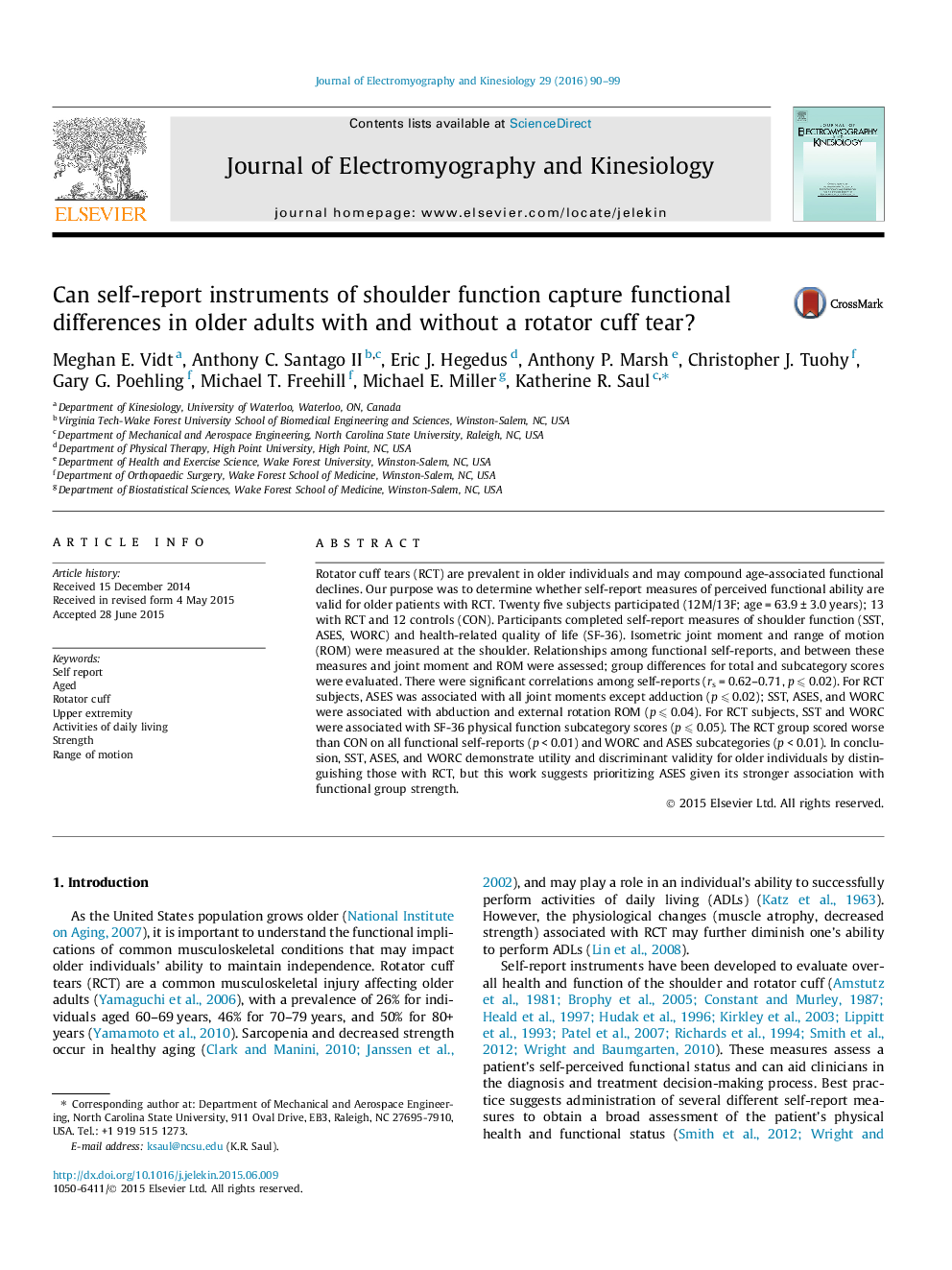| کد مقاله | کد نشریه | سال انتشار | مقاله انگلیسی | نسخه تمام متن |
|---|---|---|---|---|
| 6210264 | 1604184 | 2016 | 10 صفحه PDF | دانلود رایگان |
Rotator cuff tears (RCT) are prevalent in older individuals and may compound age-associated functional declines. Our purpose was to determine whether self-report measures of perceived functional ability are valid for older patients with RCT. Twenty five subjects participated (12M/13F; age = 63.9 ± 3.0 years); 13 with RCT and 12 controls (CON). Participants completed self-report measures of shoulder function (SST, ASES, WORC) and health-related quality of life (SF-36). Isometric joint moment and range of motion (ROM) were measured at the shoulder. Relationships among functional self-reports, and between these measures and joint moment and ROM were assessed; group differences for total and subcategory scores were evaluated. There were significant correlations among self-reports (rs = 0.62–0.71, p ⩽ 0.02). For RCT subjects, ASES was associated with all joint moments except adduction (p ⩽ 0.02); SST, ASES, and WORC were associated with abduction and external rotation ROM (p ⩽ 0.04). For RCT subjects, SST and WORC were associated with SF-36 physical function subcategory scores (p ⩽ 0.05). The RCT group scored worse than CON on all functional self-reports (p < 0.01) and WORC and ASES subcategories (p < 0.01). In conclusion, SST, ASES, and WORC demonstrate utility and discriminant validity for older individuals by distinguishing those with RCT, but this work suggests prioritizing ASES given its stronger association with functional group strength.
Journal: Journal of Electromyography and Kinesiology - Volume 29, August 2016, Pages 90–99
